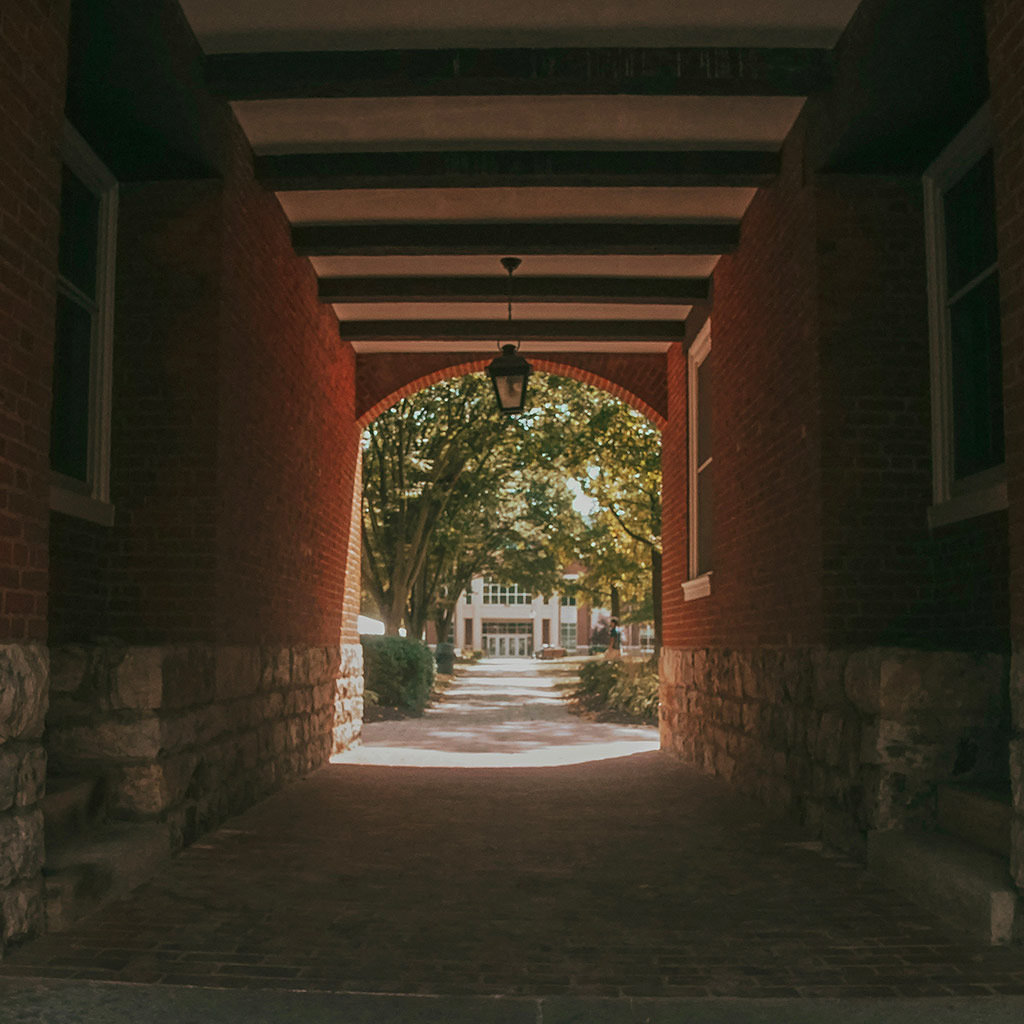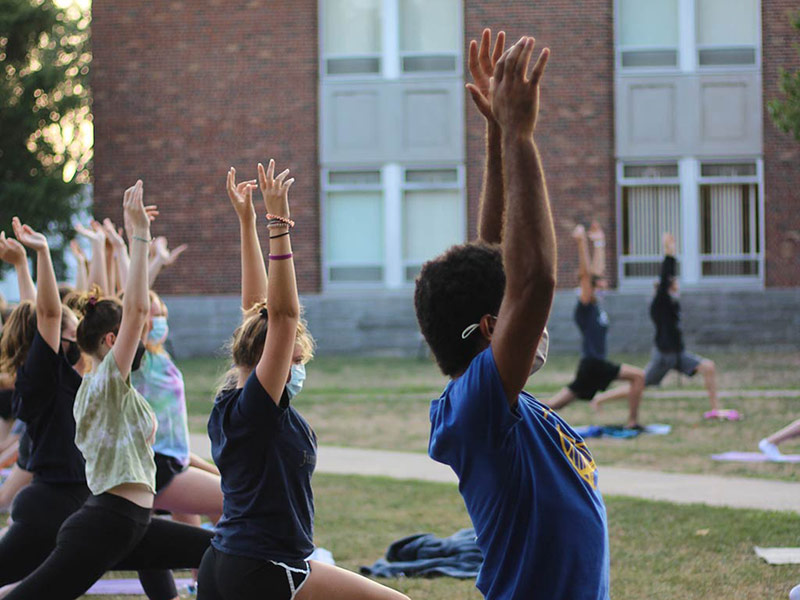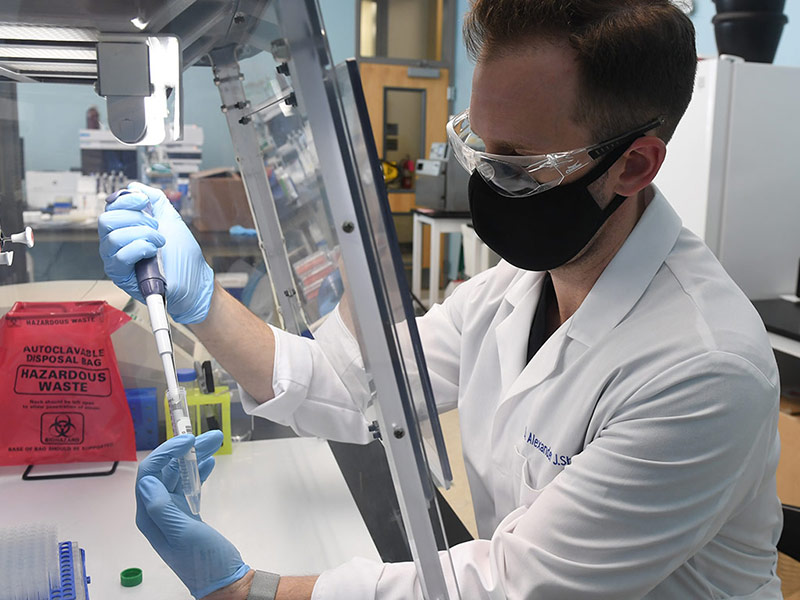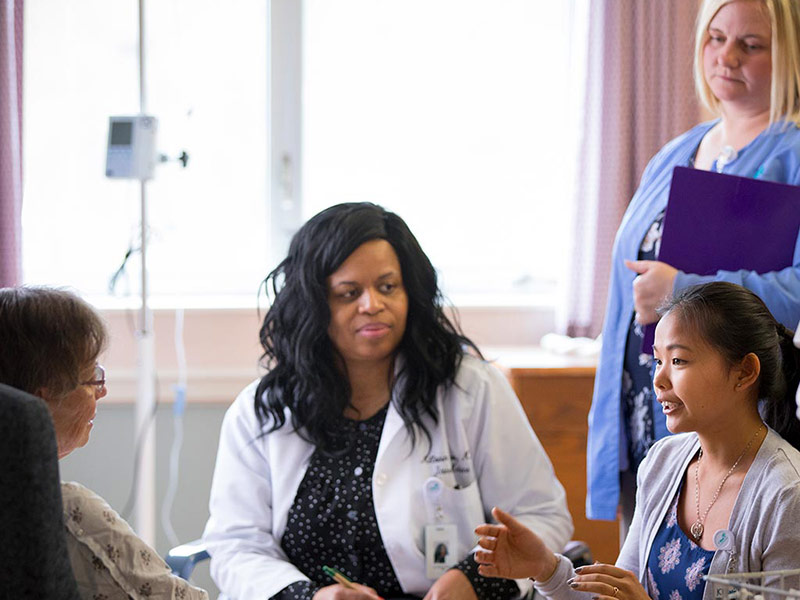Five weeks into classes, Juniata’s chief academic officer, Provost Lauren Bowen, led Juniata’s faculty members and support staff in the Herculean effort to move to remote learning as COVID-19 began its spread across the U.S.
“We are endeavoring to keep our community safe as we also need to provide a Juniata education to our students. Your cooperation is key to these efforts.” Lauren Bowen, provost and professor of politics, in a March 10 email to faculty
“We knew in February that coronavirus would affect us because of our commitment to international learning,” said Bowen. “We started convening an emergency operations team. By March 4, we knew we needed to be prepared to teach. Even so, we had no way of knowing only a week later we would suspend operations.”
Conditions were shifting rapidly. Bowen worked with College administrators to extend spring break as a time of preparation and planning.
“It is increasingly likely that we will need to offer spring courses remotely for some amount of time in the coming weeks. If you haven’t already developed a plan for how you will deliver your courses in the event we are not holding classes on campus, it’s time to get one ready,” Bowen wrote in a March 10 email to faculty, “We are endeavoring to keep our community safe as we also need to provide a Juniata education to our students. Your cooperation is key to these efforts.”
The move to emergency remote delivery necessitated shifting classroom work to Zoom, a video communication platform.
“We were using Zoom with our graduate program faculty and had purchased licenses (before COVID-19),” said Anne Wood, assistant vice president, and chief information officer, who added that Justine Black, director of digital learning, had actively been offering faculty trainings. “We knew it would be a simple enough solution for people to understand and run with.”
Juniata’s Information Technology and Library Services (ITLS) provided the technological infrastructure necessary to allow operations to take place from home offices, dining rooms, kitchens, and decks.
“Provost Bowen led the charge as we moved to remote learning,” Wood said. “She was in front of it in a very proactive way. She could see beyond where we were in that moment, knowing it wasn’t going to get better quickly.”
Over the extended spring break, an intensive training program began.
“There were lots of trainings. Not all of our faculty were well invested in online teaching or technology,” said Black. “There were also some really strong online teachers for whom the transition was easier.”
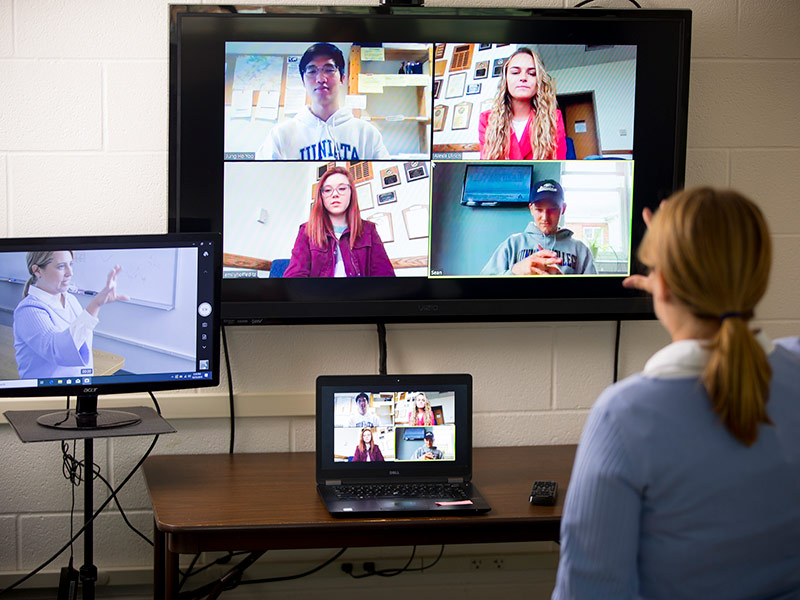
Delivering classes online was one part of the preparation, delivering the Juniata experience online was another.
“Students come to Juniata for the small classrooms and the faculty who work to build a learning community within their classes throughout the semester,” said Black. “There was a concern that the experience would be lost. We are particular about making the experience true to Juniata.”
One-on-one consultations were held with faculty members to help adapt their teaching style to a remote platform.
“Our goal was to keep faculty present and keep their personality alive while making the transition,” Black said.
Juniata’s virtual campus footprint would need to circle the globe.
“It was quite a shift because of technical issues and access issues and the fact that the world is in the midst of a profound public health crisis,” Bowen said. “More of the teaching shifted than simply the mechanism through which we engaged them.”
An email to faculty March 11 expressed appreciation for the incredible effort displayed.
“I encourage you to be patient with yourselves as you experiment with different ways of teaching, with your students as they endeavor to adapt to this learning environment, and with all your colleagues who are striving to be responsive and helpful,” Bowen wrote. “Kindness and good humor have always been a hallmark of the Juniata community. We’ll need to call on those traits in the coming weeks.”
All involved in the academic enterprise going into the revamped spring semester were encouraged to embrace the mantra, “The perfect shouldn’t be the enemy of the good.”
By March 16, operations were suspended on campus and faculty were no longer able to access their labs, classrooms, or offices, and classes were set to resume remotely March 23.
“I am impressed by the degree to which you have embraced new technological tools and have endeavored to learn the intricacies of Zoom and develop greater sophistication with Moodle,” wrote Bowen in a March 22 email. “Your efforts and your creativity and your willingness to try new things have been awe-inspiring.”
Students, newly returned to their homes, found themselves adjusting to remote learning—all while acclimating to life during quarantine and the accompanying stressors.
“The essence of Juniata is meeting our students where they are and providing support,” said Bowen. “As we worked to help them weather the pandemic, that support became so much more palpable and poignant.”
ITLS staff partnered with the directors of the James J. Lakso Center for the Scholarship of Teaching & Learning (SoTL) at Juniata College, Kim Roth, professor of mathematics (spring 2020 semester), and Ursula Williams, associate professor of chemistry (fall 2020 semester).
“It was a huge shift. Not all of the faculty are tech-savvy, some had never used Moodle or Zoom prior to the shutdown,” Roth said. “They had no online presence in their classroom.”
“I know some faculty members came to campus and worked in their cars.” Anne Wood, Assistant VP and Chief Information Officer
Distance created relational connectivity difficulties and internet connectivity proved an obstacle difficult to surmount.
“The home connectivity that some faculty and students had or didn’t have was our biggest hurdle. Some live in extremely rural areas, and because of COVID, there weren’t many solutions. You can’t go to a library for the internet,” Wood said. “Students really did struggle. I know some faculty members came to campus and worked in their cars.”
Roth added that several faculty members would work from the parking lot behind Good Hall.
The work of ITLS was—and continues to be—vital to providing the Juniata experience to students on and off-campus during the pandemic.
“We were here and were able to leverage the technology available as fully as possible. The work we do typically was well received and much-needed,” said Wood. “It is satisfying to see resources being used to the fullest.”
Along with navigating the technological components of emergency remote learning, faculty members were attuned to both the academic and emotional needs of their students.
“Some students were not very responsive when we moved to remote learning,” said Roth. “Students were dealing with all sorts of conditions in the spring—internet problems, family dynamics, or taking care of younger siblings.”
Altering syllabi and reordering expectations were unexpected challenges for faculty members accustomed to face-to-face contact with their students.
“These adjustments are not a sacrifice of quality and rigor,” Bowen wrote. “They are a recognition of the humanity and lived experiences of our students and of ourselves. Modifications to our expectations will, I believe, strengthen rather than compromise what our students learn.”
Partnering with their students, faculty worked to ease the transition from on-campus to remote learning.
“Learning online is a very different skillset,” Roth said. “It was rough, but we all pulled together. It was a lot of work for the faculty and tiring, but it worked out as best it could under the circumstances. The spring was an example of a lot of people helping people.”
COVID-19 impacted Juniata’s Summer Online Program as well. Course offerings were expanded, with two one-credit courses, Solving the COVID-19 Crisis, offered as a free opportunity for incoming first years.
“The program has been growing year after year, and this year there was tremendous growth,” Black said. “The COVID-19 class was an opportunity for incoming students to learn the ways COVID-19 impacted everything around them.”
In preparation for the upcoming fall semester, ITLS deployed new wireless service to provide students with more seamless access to WiFi on campus. This infrastructure would be critical for the next phase of academic delivery at Juniata—HyFlex, a hybrid flexible model of instruction.
“Our faculty have been so invested… they are doing it all for the students.” Justine Black ’08, director of digital learning
“We wanted to be thoughtful in our planning and knew we were not going back to the way things were. There was a radical reset,” said Bowen. “We wanted to bring the best of what we learned forward while being contemplative and adaptive. It was a profound, transformative moment for higher education as we examined both how we teach and how we learn.”
Preparing for delivery of the HyFlex model for the fall 2020 semester, ITLS once again worked with SoTL to prepare faculty for the simultaneous delivery of in-person and remote coursework.
“We started talking about HyFlex at the beginning of April as we wanted to be prepared for the uncertainty,” Bowen said. “We knew that even if the pandemic ended, we needed to be prepared to accommodate immunocompromised students and international students.”
Black collaborated with SoTL director Williams to create 20 training opportunities for over 400 participants.
“It was an incredibly busy and rewarding summer. Our faculty have been so invested. They make me love my job and Juniata even more,” said Black. “Their commitment and dedication to teaching are amazing. They are doing it all for the students.”
Many of the challenges facing faculty members in the spring loomed again for the fall.
To aid in the transition to the HyFlex model of instruction, the members of the Innovative Education Initiatives (IEI) committee, led by Paul Schettler, Charles A. Dana Professor of Chemistry Emeritus, offered grants to help faculty adapt to the new mode of delivery. Schettler’s philanthropy provided funding for these grants.
“A challenging part of HyFlex is navigating two challenges at once. Juniata College prides itself on relational education, and we think our students are so much better for that,” Williams said. “In HyFlex, if we have some students in person and some remote, we want them all to feel like part of the class and to retain the Juniata component—the community building—even while social distancing.”
Williams explained that her research indicates HyFlex requires more focus and energy from students and faculty alike.
“Having technology involved and having students participating from different places, everyone has to think a little harder about dialogue and facial expressions,” said Williams. “Face-to-face teaching can give cues, so online, you need to be more deliberate about giving those cues.”
The hard work of everyone involved in delivering Juniata’s individualized education to students reflects their deep commitment.
“They understood the urgency and knew the impact would be devastating if we were not ready. Everyone leaned in and worked hard this summer,” Bowen said. “They’ve taken risks, they’ve taken chances, and creativity has come with it.”

